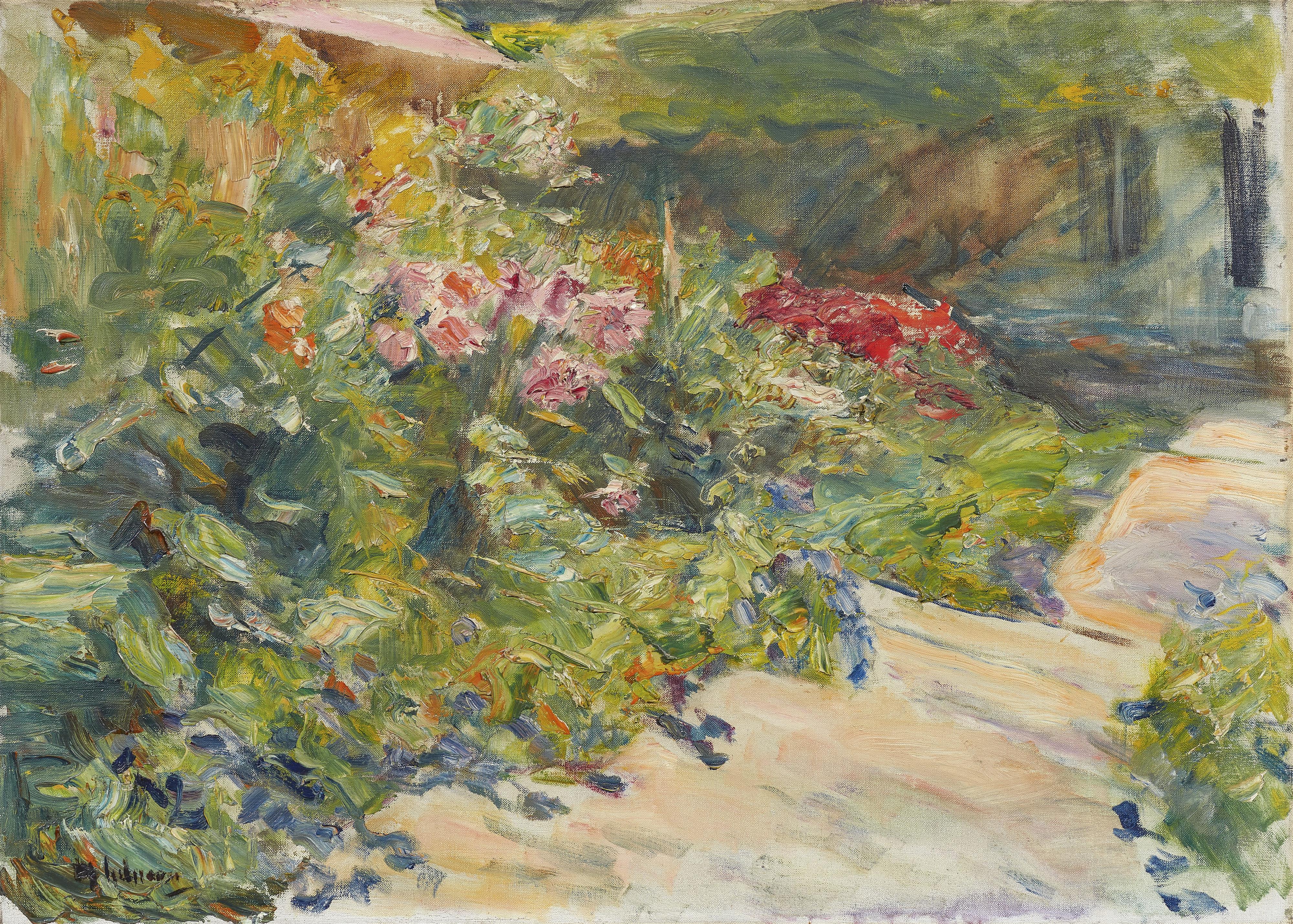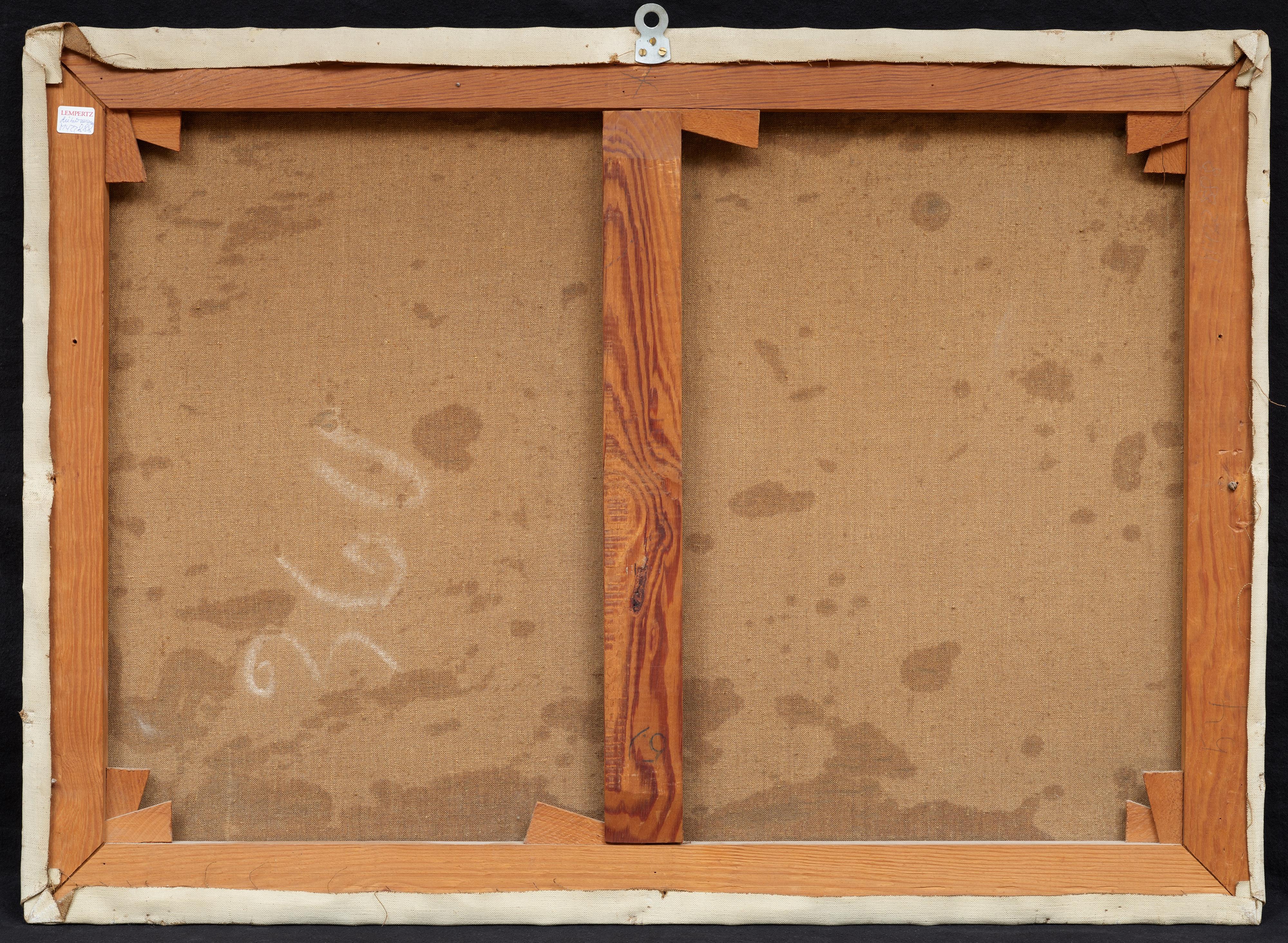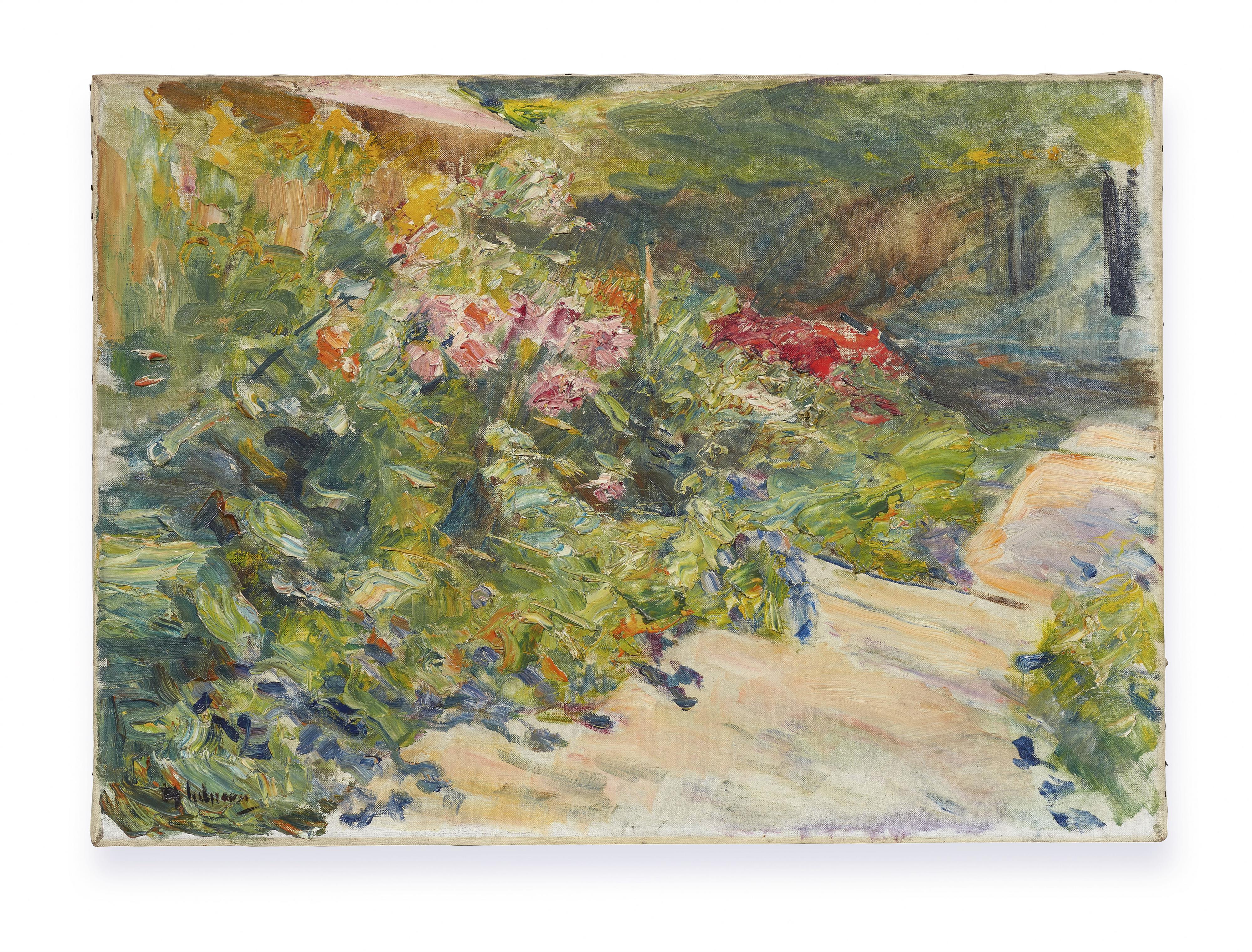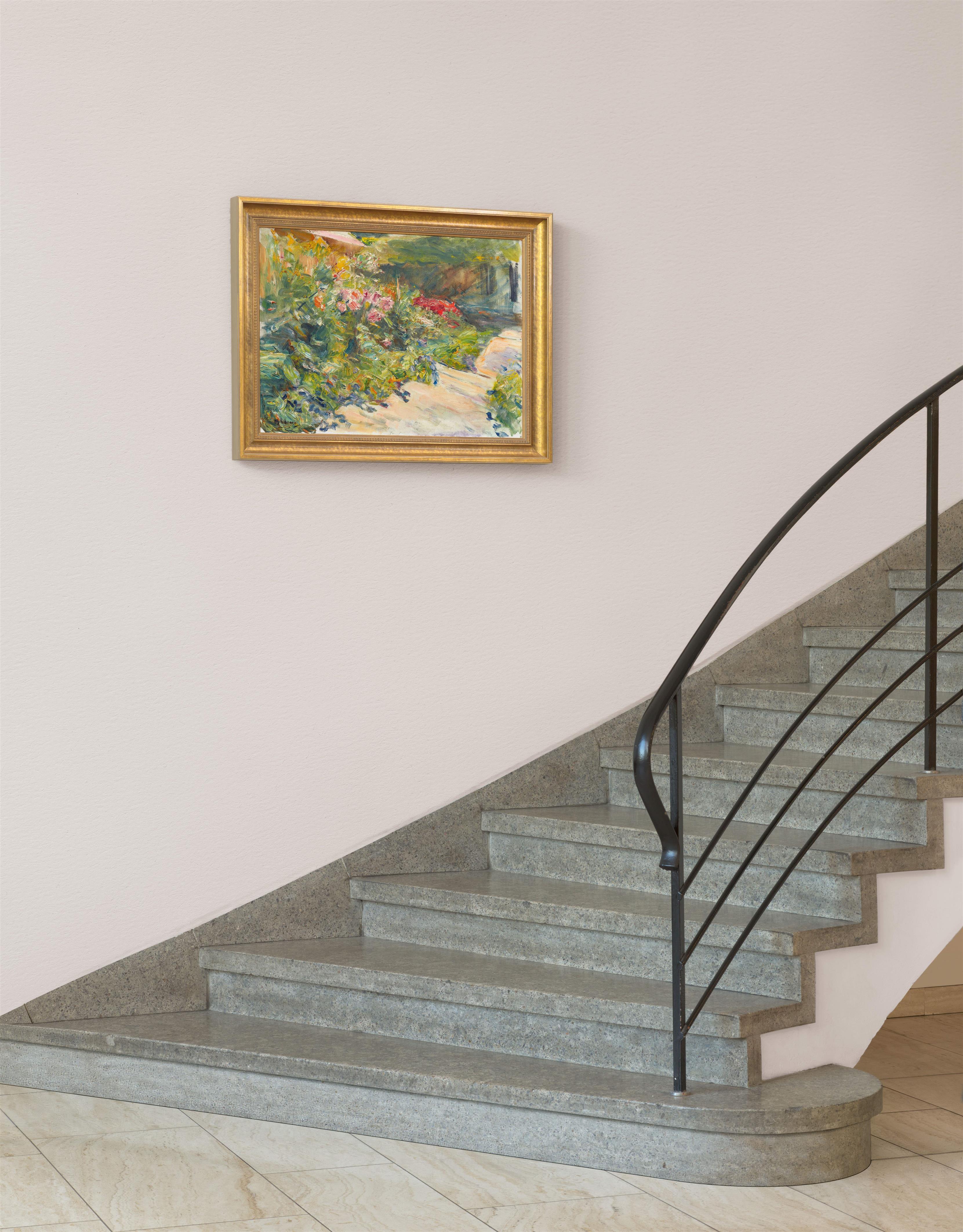Max Liebermann
Blumenstauden am Gärtnerhaus nach Osten
Circa 1928
Oil on canvas. 54 x 74 cm. Framed. Signed 'MLiebermann' in black lower left. - In very fine condition with fresh colours, three tiny losses of colour in the impasto parts.
This view of a garden is rendered in an extraordinarily bold diagonal composition by by Max Liebermann. With a summery wildness, the flower beds grow luxuriantly beside the path alongside the gardener’s house, invoked here merely as the little architectural details of a rose-coloured section of roof and the yellow of its walls. The windows of the villa itself are largely seen sheltered within the shade beneath the green of the high hedges.
Following the beginning of World War I, political considerations led Liebermann to withdraw from the Netherlands – where he had created a large portion of his prior oeuvre – and go to Berlin’s Wannsee, where he purchased one of the last available lakeside plots. From that time on, the painter focused on his more immediate surroundings, creating numerous paintings from various angles depicting his large, magnificently designed garden laid out in collaboration with Alfred Lichtwark.
In 1928 Liebermann became interested in the planted borders along the edges of the path leading past the garden house to the side of his villa, primarily selecting oblique views (cf. Eberle 1928/5-1928/11). Compared with these other works, our garden painting is captivating due to the freedom of its forceful painterly gesture, with colour applied in a largely autonomous manner, abstracted from its subject matter and nonetheless conveying the scene’s summery, almost shimmering warmth.
Catalogue Raisonné
Eberle 1928/12
Provenance
Auction Rudolph, Hamburg, 28 Sept.1959, lot 235 with ill.; Kunststudio Klewer, Berlin (1972); since then private collection, Hesse








